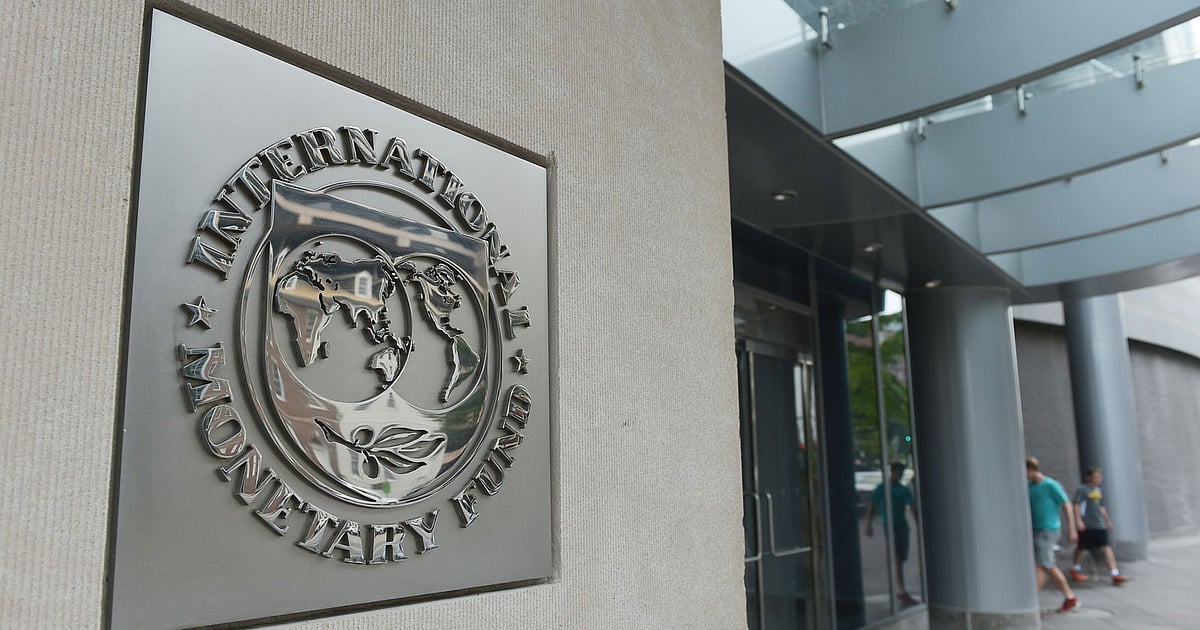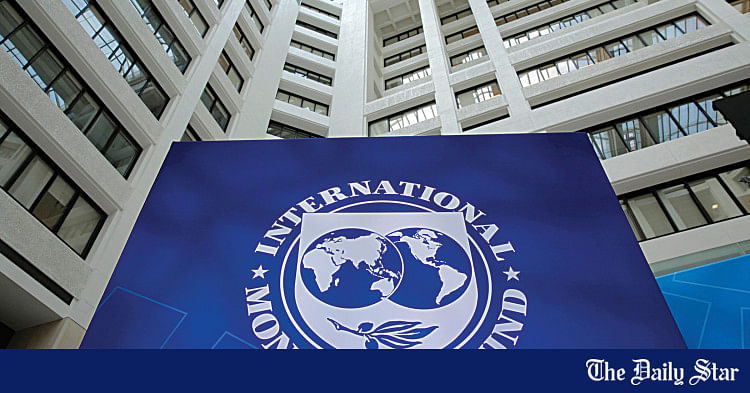- Copy to clipboard
- Thread starter
- #761
Saif
Senior Member
- Joined
- Jan 24, 2024
- Messages
- 15,397
- Reaction score
- 7,865
- Points
- 209
- Nation

- Residence

- Axis Group


Bangladesh reserves climb after IMF loan disbursement
Bangladesh has received $1.34 billion in two installments from the ongoing USD 4.7 billion loan programme with the International Monetary Fund (IMF). The funds were deposited into Bangladesh’s account on 26 June. As a result, the country’s total foreign currency reserves surpassed $30 billion...
Bangladesh reserves climb after IMF loan disbursement
Staff Correspondent Dhaka
Published: 28 Jun 2025, 21: 16

IMF logo File photo
Bangladesh has received $1.34 billion in two installments from the ongoing USD 4.7 billion loan programme with the International Monetary Fund (IMF).
The funds were deposited into Bangladesh’s account on 26 June. As a result, the country’s total foreign currency reserves surpassed $30 billion at the end of the day last Thursday. On that day, the reserves stood at $30.51 billion.
However, according to the IMF’s Balance of Payments Manual (BPM-6) accounting method, the reserves amount to $25.51 billion. The amount of usable reserves stands at $19.80 billion.
Sources at Bangladesh Bank confirmed this.
Remittances through legal channels have increased during the interim government period. This rise in remittances has brought relief to the foreign exchange market, easing the pressure on foreign currency reserves.
The central bank has not sold any dollars from the reserves for the past ten months.
Meanwhile, more than $5 billion in loans have entered the country, including for banking and revenue sector reforms, budget support, and other loans. These inflows have contributed to the rise in foreign currency reserves.
Additionally, $420 million in loans from Japan were received and added to the reserves yesterday, Friday. Considering the country’s debt repayment capacity, the IMF will provide an additional $900 million in loans.
Moreover, another $1 billion in loans is expected this month from the World Bank, the Asian Infrastructure Investment Bank (AIIB), Japan, and the OPEC Fund.
This will be added to the reserves by the end of the month. Officials at the central bank believe that the total reserves will reach $32 billion by the end of the current month.
Meanwhile, in the fiscal year 2023–24, remittances totaled $23.91 billion. In the current fiscal year 2024–25, remittances have already reached $29.46 billion as of last week—an increase of nearly $6 billion.
In addition, export earnings have grown by 9 per cent. Although imports have increased by about 5 per cent, the foreign currency reserves are still rising.
As of 31 July 2024—the end of the last Awami League government—the total reserves were $25.92 billion. At that time, the BPM-6 method showed reserves of $20.48 billion.
Staff Correspondent Dhaka
Published: 28 Jun 2025, 21: 16
IMF logo File photo
Bangladesh has received $1.34 billion in two installments from the ongoing USD 4.7 billion loan programme with the International Monetary Fund (IMF).
The funds were deposited into Bangladesh’s account on 26 June. As a result, the country’s total foreign currency reserves surpassed $30 billion at the end of the day last Thursday. On that day, the reserves stood at $30.51 billion.
However, according to the IMF’s Balance of Payments Manual (BPM-6) accounting method, the reserves amount to $25.51 billion. The amount of usable reserves stands at $19.80 billion.
Sources at Bangladesh Bank confirmed this.
Remittances through legal channels have increased during the interim government period. This rise in remittances has brought relief to the foreign exchange market, easing the pressure on foreign currency reserves.
The central bank has not sold any dollars from the reserves for the past ten months.
Meanwhile, more than $5 billion in loans have entered the country, including for banking and revenue sector reforms, budget support, and other loans. These inflows have contributed to the rise in foreign currency reserves.
Additionally, $420 million in loans from Japan were received and added to the reserves yesterday, Friday. Considering the country’s debt repayment capacity, the IMF will provide an additional $900 million in loans.
Moreover, another $1 billion in loans is expected this month from the World Bank, the Asian Infrastructure Investment Bank (AIIB), Japan, and the OPEC Fund.
This will be added to the reserves by the end of the month. Officials at the central bank believe that the total reserves will reach $32 billion by the end of the current month.
Meanwhile, in the fiscal year 2023–24, remittances totaled $23.91 billion. In the current fiscal year 2024–25, remittances have already reached $29.46 billion as of last week—an increase of nearly $6 billion.
In addition, export earnings have grown by 9 per cent. Although imports have increased by about 5 per cent, the foreign currency reserves are still rising.
As of 31 July 2024—the end of the last Awami League government—the total reserves were $25.92 billion. At that time, the BPM-6 method showed reserves of $20.48 billion.


















